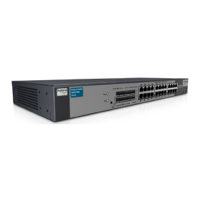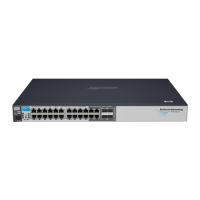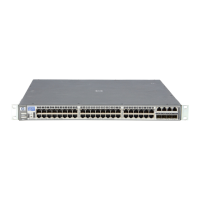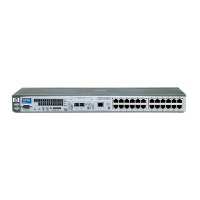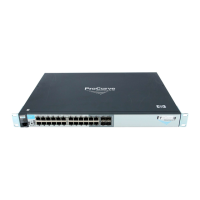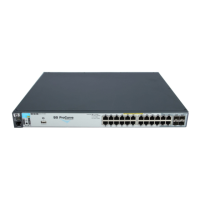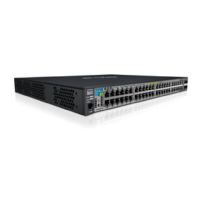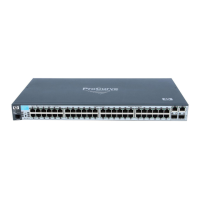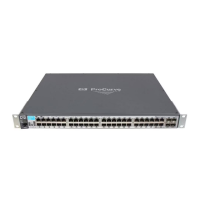10-9
Traffic/Security Filters
Using Source-Port Filters
Editing a Source-Port Filter
The switch includes in one filter the action(s) for all destination ports and/or
trunks configured for a given source port. Thus, if a source-port filter already
exists and you want to change the currently configured action for some
destination ports or trunks, use the filter source-port command to update the
existing filter. For example, suppose you configure a filter to drop traffic
received on port 8 and destined for ports 1 and 2. The resulting filter is shown
on the left in figure 10-5. Later, you update the filter to drop traffic received
on port 8 and destined for ports 3 through 5. Since only one filter exists for a
given source port, the filter on traffic from port 8 appears as shown on the
right in figure 10-5:
Figure 10-5. Assigning Additional Destination Ports to an Existing Filter
Using Named Source-Port Filters
Named source-port filters are filters that may be used on multiple ports and
port trunks. As with regular source-port filters, a port or port trunk can only
have one source-port filter, but this new capability enables you to define a
source-port filter once and apply it to multiple ports and port trunks. This can
make it easier to configure and manage source-port filters on your switch. The
commands to define, configure, apply, and display the status of named
source-port filters are described below.
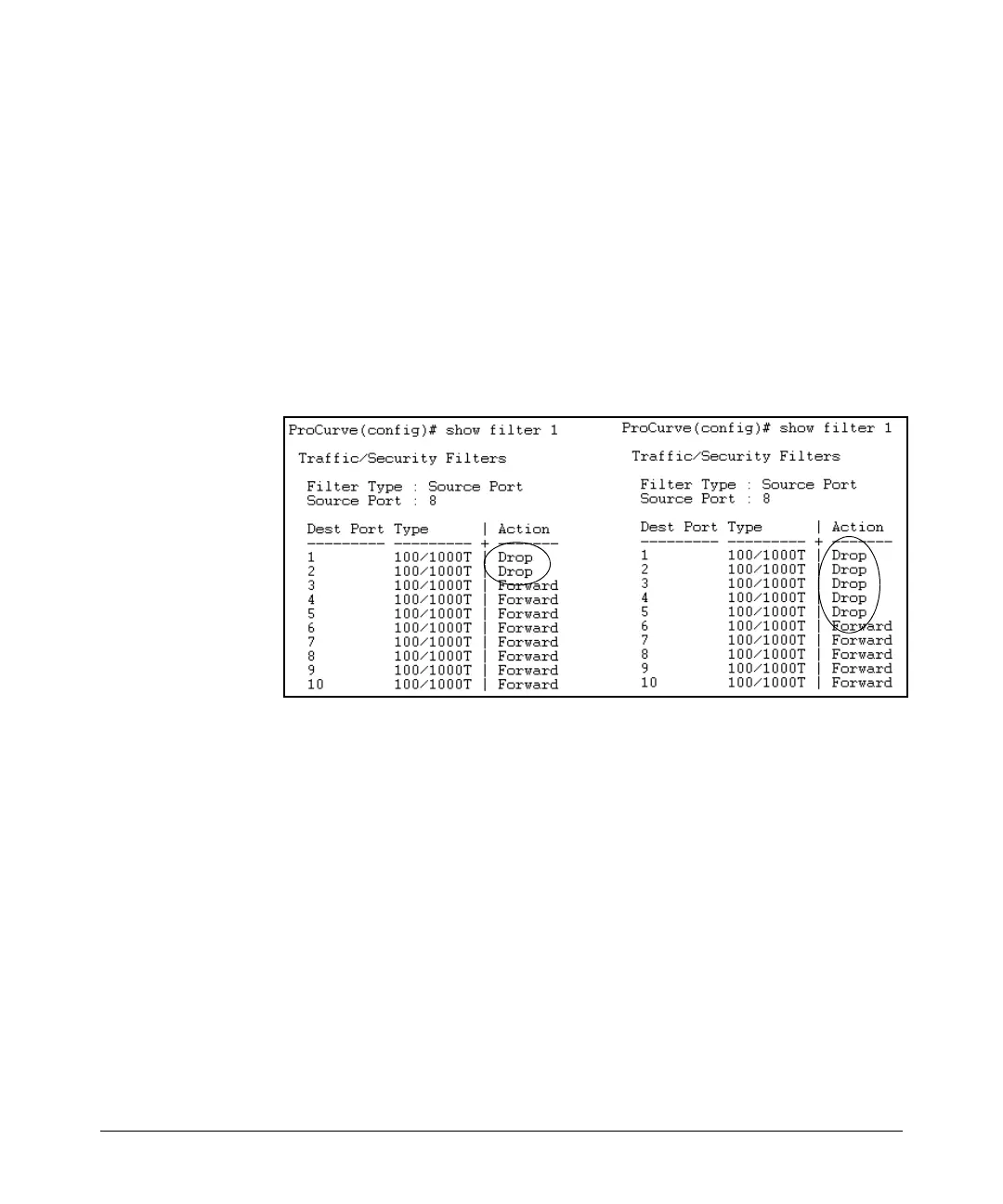